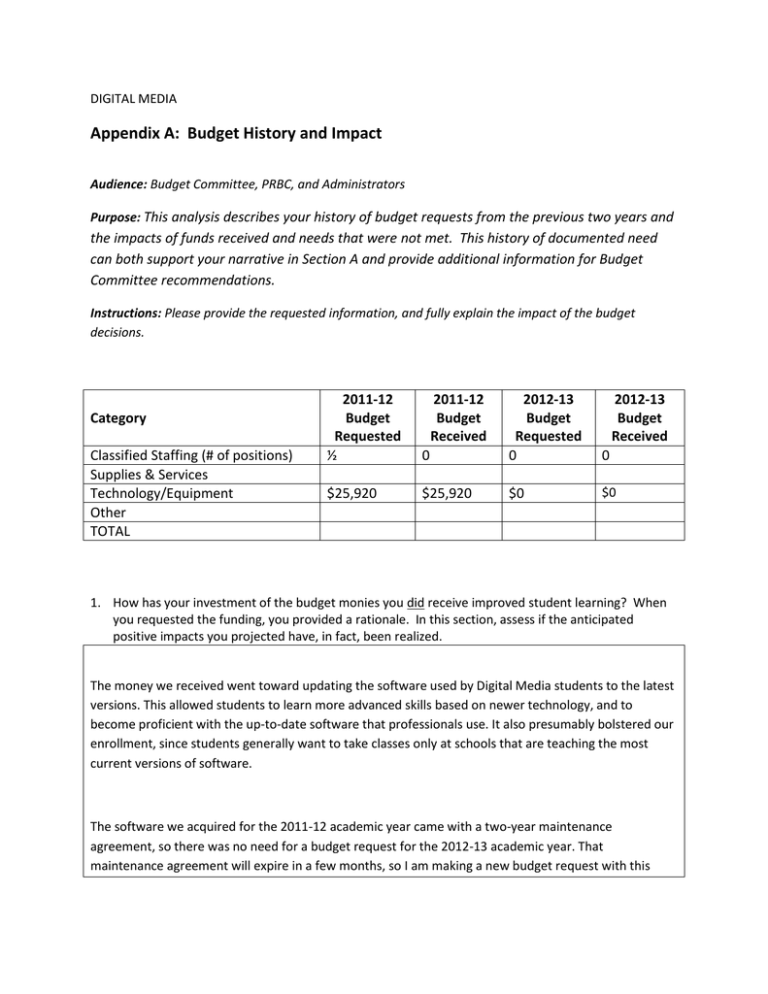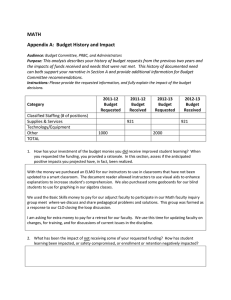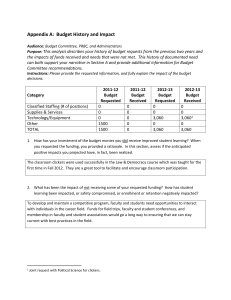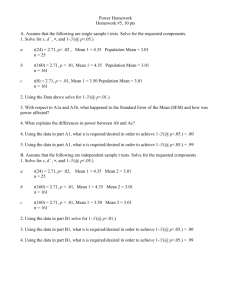Appendix A: Budget History and Impact
advertisement

DIGITAL MEDIA Appendix A: Budget History and Impact Audience: Budget Committee, PRBC, and Administrators Purpose: This analysis describes your history of budget requests from the previous two years and the impacts of funds received and needs that were not met. This history of documented need can both support your narrative in Section A and provide additional information for Budget Committee recommendations. Instructions: Please provide the requested information, and fully explain the impact of the budget decisions. Category Classified Staffing (# of positions) Supplies & Services Technology/Equipment Other TOTAL 2011-12 Budget Requested ½ $25,920 2011-12 Budget Received 0 2012-13 Budget Requested 0 2012-13 Budget Received 0 $25,920 $0 $0 1. How has your investment of the budget monies you did receive improved student learning? When you requested the funding, you provided a rationale. In this section, assess if the anticipated positive impacts you projected have, in fact, been realized. The money we received went toward updating the software used by Digital Media students to the latest versions. This allowed students to learn more advanced skills based on newer technology, and to become proficient with the up-to-date software that professionals use. It also presumably bolstered our enrollment, since students generally want to take classes only at schools that are teaching the most current versions of software. The software we acquired for the 2011-12 academic year came with a two-year maintenance agreement, so there was no need for a budget request for the 2012-13 academic year. That maintenance agreement will expire in a few months, so I am making a new budget request with this program review. 2. What has been the impact of not receiving some of your requested funding? How has student learning been impacted, or safety compromised, or enrollment or retention negatively impacted? We used to have a paid supervisor, Arlene DeLeon; when she took the early-retirement option, I requested a half-time person to replace her. That request was not granted. The consequence is that we rely on volunteers to staff our open lab hours, and because those volunteers are neither as knowledgeable nor as pedagogically experienced as Arlene was, our students are not getting the same high-quality help that they used to get. Also, because Arlene was a qualified professional, time spent in the lab under her supervision counted as class attendance. As a result, my teaching load could accommodate more courses, since students could spend some of each course’s lab hours in open labs supervised by Arlene. Now that I have to supervise each course’s required lab hours myself, the number of courses I can teach has been reduced. The consequence is fewer course offerings for students and reduced productivity for the Digital Media program. Finally, because I rely on volunteers to keep the lab open, I never know at the beginning of a semester how much lab time will be available. As a result, I have to tell students something I never had to tell them before: that if they can’t afford their own hardware and software, they’re less likely to succeed in Digital Media courses. That presents a serious equity issue. (Note: I did not make a formal request for a lab supervisor in last year’s program review, since we were told at that time only to make requests for personnel who were critical to our program’s continued existence. I did express the need in my narrative, however.)



